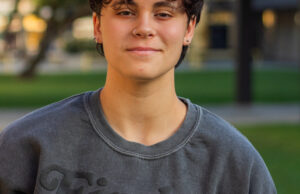Health class revised to officially include LGBTQ+ curriculum
The health department and CVUSD School Board have begun the process of revising the health class curriculum in order to align with Assembly Bill No. 329, which was signed into law by Governor Jerry Brown in early October 2015 and took effect at the start of 2016.
The law mandates sexual education along with HIV prevention education in all public schools. Additionally, it amends several sections in the Education Code so that abstinence, contraceptive methods, and different sexual orientations will be covered in the curriculum. Specifically, section 51933 of the code now states that, “instruction and materials shall affirmatively recognize that people have different sexual orientations and, when discussing or providing examples of relationships and couples, shall be inclusive of same-sex relationships.”
“Currently if someone asks a question about (LGBTQ+), I answer it to the best of my ability. We are going to be incorporating more into the curriculum,” Lynn Baum, health teacher, said. “We try to stress tolerance and to be accepting of others’ alternative lifestyle.”
The change in the education code is an ensurance of inclusion of LGBTQ+ recognition in health class topics, including relationships and bullying. While the subject has been addressed in class in the past few years without specific requirements in written curriculum, the school board is currently revising the curriculum to officially include mention of LGBTQ+ orientation.
“I don’t actually think there will be a change because … we’re not necessarily changing what we’re discussing,” Lorena Caulfield, health teacher, said. “The heart of the matter is we discuss mental, physical and social risks and consequences of sexual activity, but we also deal with relationship building and with positive relationships, and how you treat people and the stress levels and mental health aspect of all that as well.”
The acknowledgement of non-heterosexual orientations and transgender people in class discussions will assist in awareness and acceptance of others.
“We (will) make sure that we’re mentioning that there are transgender people, and there are homosexual couples and heterosexual people and different people,” Baum said. “They’re legally protected from being discriminated against. We do address the bullying aspect that comes with that because LGBTQ+ youth are bullied much more than any other faction in society so they have the highest suicide rate because of that bullying.”
One major perspective on teaching the LGBTQ+ subject is to emphasize the respect and non-violence of all interpersonal relationships, whether they be platonic or intimate between people of any orientation.
“It’s regardless of what a person identifies with themselves or with orientation or preference. It has to do with a relationship between (people) … It applies to everyone,” Caulfield said. “In the past it was too broad, and there were some (people who identified as LGBTQ+) that felt they weren’t included in these descriptions because it was too abstract. That’s why the ed code was changed to make sure that it’s included, that yes, there are people who don’t fit the traditional genderbread.”
The revised curriculum is set to go into effect at the start of the next school year.

